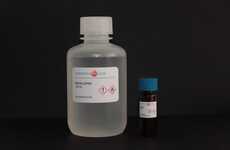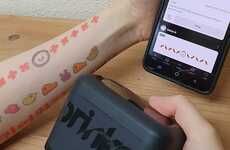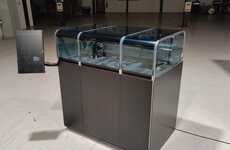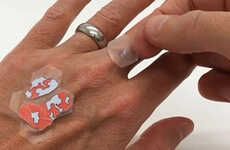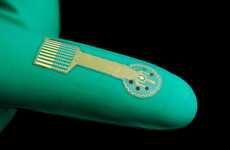
Wake Forest Institute for Regenerative Medicine Designs Futuristic Wound Treatment
Marissa Brassfield — November 1, 2010 — Tech
References: web2.facs.org & gizmodo
Researchers at the Wake Forest Institute for Regenerative Medicine have come up with a skin-printing concept that would reshape how medics treat wounds on the battlefield. Using the same inkjet technology found in most entry-level printers, the design would print out sheets of skin for use by medical professionals.
Right now, the design is being tested on mice, and pigs are next on the testing schedule.
Implications - The printer would create skin only for emergencies. The printed skin would act like a type of glue and stick to the body. The chamber of the printer would contain skin cells and collagen, which are blood coagulants. The two get mixed to form what is called fibrin. The fibrin is then topped with keratinocyte skin cells and voila! A speedy recovery is on the way.
Right now, the design is being tested on mice, and pigs are next on the testing schedule.
Implications - The printer would create skin only for emergencies. The printed skin would act like a type of glue and stick to the body. The chamber of the printer would contain skin cells and collagen, which are blood coagulants. The two get mixed to form what is called fibrin. The fibrin is then topped with keratinocyte skin cells and voila! A speedy recovery is on the way.
Trend Themes
1. Skin-printing Technology - The development of skin-printing technology revolutionizes wound treatment by enabling medical professionals to quickly and efficiently produce sheets of synthetic skin for emergencies.
2. Inkjet Skin Printing - The utilization of inkjet technology in printing skin offers a promising method for wound healing in both battlefield and medical settings.
3. Regenerative Medicine Advancements - The research and innovation in regenerative medicine, specifically in the printing of functional skin, present opportunities to revolutionize the field of wound care.
Industry Implications
1. Healthcare - The healthcare industry can explore the implementation of skin-printing technology to enhance wound treatment and improve patient outcomes.
2. Biotechnology - Biotechnology companies can leverage inkjet skin printing advancements to develop new products and therapies for wound healing and regenerative medicine.
3. Military and Defense - The military and defense industry can adopt skin-printing technology to provide efficient and effective wound treatment solutions for soldiers on the battlefield.
2
Score
Popularity
Activity
Freshness



